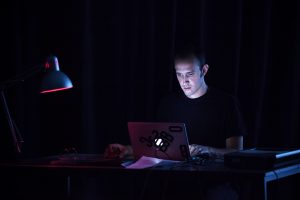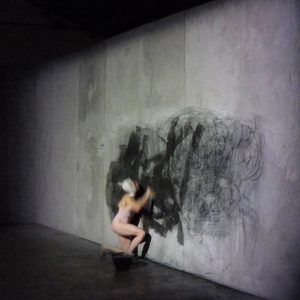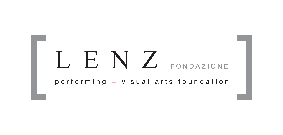
Events
NATURA DÈI TEATRI #24
Performing Arts Festival
Lenz Fondazione
IPHIGENIA IN TAURIDE | Ich bin stumm (I am mute)
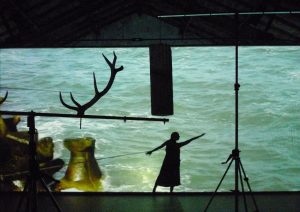
In this new creative process – second chapter of the diptych dedicated to the myth of Iphigenia – the stage installation and the direction by Maria Federica Maestri and the imagery of Francesco Pititto are the result of a triple inspiration: Goethe’s drama Iphigenie auf Tauris (1787), Gluck’s composition Iphigénie en Tauride (1779) and the historic action by Joseph Beuys Titus-Iphigenie of 1969.
Interpreting Iphigenia in Tauris | I am mute is Monica Barone, a dancer whose performative sensitivity has matured in the relationship with her own physical specificity. Monica was born with a severe facial malformation, and, despite the numerous surgical operations she is often subjected to, this condition does not prevent her from cultivating and practicing with passion the languages of contemporary dance and photography. She played the role of Beatrice in the large site-specific installation Paradiso. Un pezzo Sacro by Lenz (2017).
Lenz Fondazione
IPHIGENIA IN AULIDE | Oratorio
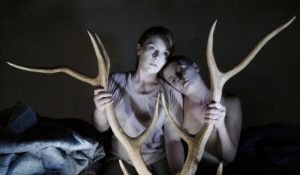
Iphigenia in Aulide Oratorio, dramaturgical segment of the first part of the diptych dedicated to the myth of Iphigenia, will be set up at the Farnese Theater in Parma. Valentina Barbarini, iconic actress of Lenz and the soprano Debora Tresanini, are interpreters of this oratorical version, which is densified on the subject of farewell and abandonment, spatially modulated in the double arched loggia of the most beautiful baroque theater in the world. student of the A. Boito Conservatory, engaged in the arias of the homonymous work of Gluck.
IN THE NURSERY
Concert
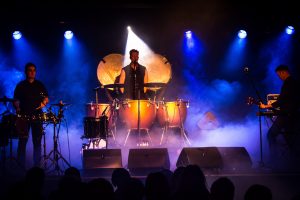
In The Nursery are the Humberstone twins, supported by a polyglot vocalist and a percussionist. Their sound – renamed filmic music – was born from the decadent sources of the dark movement and has been enriched over the years by innumerable influences.
The visionary musical effect is what twins call filmic music. “They don’t understand it so much in the sense of” music for soundtrack “but their music evokes a filmic dimension, between classical and New Age, Romanticism and Decadentism, creating an atmosphere, fostering the imagination, influenced by Genet’s existentialism and from the symbolism of Cocteau, the Humberstone twins made their debut in 1981 with an Ep, When Cherished Dreams Come True, with apocalyptic atmospheres and glacial harmonies.A suggestive work, followed shortly after by another Ep, Temper, which reproduces and expands that funereal climate , between martial beats, spectral screams and a requiem organ, their first weapon reveals their extra weapon: the ability to use structures of classical music in rock songs, creating an atmosphere that, by itself, is worth more than the songs. Their challenge is to be able to put together the menacing dark punk of Siouxsie and Joy Division, or the dreamlike pop of Cocteau Twins and Dead Can Dance, with Beethoven’s symphonies.
Lenz Fondazione | Lillevan
ORESTEA CONCERT
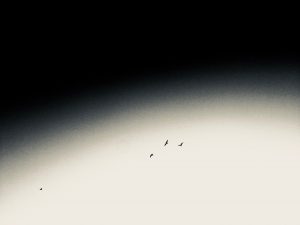 “The remedy is here in this house. It’s not out, it’s right here. ”
“The remedy is here in this house. It’s not out, it’s right here. ”
Concert of sounds and images for the thrice-tragic saga, which expands, over time, inside the stony bed of a black house / stream. In the ripples of water fluctuating between clots of bloodlines, the Family, now by then, is torn apart to death among prophecies of victories, sacrifices, betrayals, massacres and the Gods guide, and make fall in love, divert the course of water that nothing and nobody can stop. From the nest to the mother’s milk, the saga closes – pupil – with a peace ritual.
Stop, baby! Baby of this tit, here you sucked the milk of life.
Aristide Rontini
IT MOVES ME
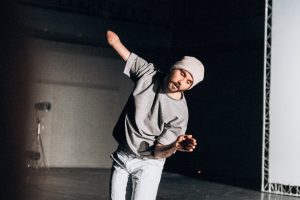
“It moves me” explores the forgotten and inaccessible part of oneself. It takes inspiration from the element of water as a symbol of purification, energy, current, death, rebirth, from the fact that human beings are mostly made up of water, and from studies on the ability of water to record and memorize external vibrations.
Hidden Parts
DISCO(mfort)

Some Indications For Listening To The Music From Hp:
- New hierarchy
It is the rhythmic section (bass and drums) that leads and gives meaning to the compositions. The other instruments and voice, free of formal responsibilities, are expressed in great liberty.
- Spontaneous sessions
Songs aren’t created by single melodic ideas but from a collective experience. Nothing is written or imagined before its execution. Every musical fragment is a result of unlimited jam sessions, unique and one-shot. Circumstances where so-called “accidents occur live” sometimes involontarily from the will of the musicians.
- Deferred compositions
Once the musical base material is acquired the real work of composing begins. The selection of the tracks happens according to characteristics based on originality and singularity of music cues and the preservation of the original spirit of spontaneous unpredictability. During the organization of the themes, also executed in different years, the nature of each song is defined with the overlapping of new instrumental tracks, sound effects or vocal inserts. These inserts follow the same compositional criteria of the bases. By recreating the conditions of the initial improvisations, the interpreter must react by instinct to the flow of the music, without the possibility of planning prior to his performance.
- Rhythmic declamate
The vocal section explores an expressive hybrid that arises between the declaimed and sung. Texts are also conceived for a live rendition.
Lenz Fondazione
ORESTEA #2 Latte
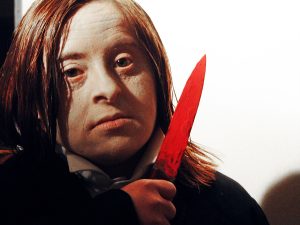 In Latte, the new episode from Le Coefore, the scenic installation prepares – symmetrically to the nursery / bed inhabited by the Mother Clitennestra, the central scenic element in the first chapter – a den / cradle in which the Son Oreste, protagonist of the second chapter lived , humiliated and derided.
In Latte, the new episode from Le Coefore, the scenic installation prepares – symmetrically to the nursery / bed inhabited by the Mother Clitennestra, the central scenic element in the first chapter – a den / cradle in which the Son Oreste, protagonist of the second chapter lived , humiliated and derided.
Returning to the Parents’ House after the removal requested by the Mother, he was persuaded by Sister Elettra to set up, in revolt against maternal power, an anti-authoritarian, intolerant, antagonistic infantile collective. The performance of extreme acts such as the destruction of the House and the killing of the Mother will transfigure the child into a delirious and furious adult.
For this rereading of the tragic, historical actors and sensitive actors of the Lenz ensemble are confronted in a close dialogue. Interpreters of # 2 Latte are Sandra Soncini, in the role of Clitennestra and Barbara Voghera, actress with Down syndrome, in the role of Oreste, already an extraordinary performer of Hamlet and of Lenz’s major creations since the late nineties. Together with them Lara Bonvini in the role of her sister Elettra and Valentina Barbarini in function of Coro.
Teatro Akropolis
PRAGMA
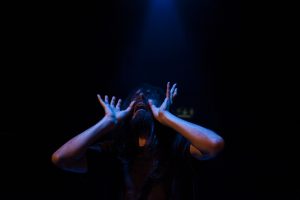 Kore is the nameless maiden, daughter of Demeter, the mother goddess who dispenses seasons, the goddess of wheat and poppies. While Kore is catching flowers, Hades, lord of the underworld, kidnaps the girl and leads her to his reign. The pain of Demeter is boundless, it generates the end of every cycle of rebirth. Only Baubo, a grotesque image of Dionysian nature, manages to make her laugh, distracting her for a moment from her mourning and dancing obscenely for her. Zeus, determined to interrupt the winter that Demeter loosed on the world, intercedes with his brother Hades to release Kore and grant her to return to her mother. Kore returns as Persephone, queen of the underworld, destined to reach cyclically Hades in his reign. From his encounter with Demeter a new creature is generated, the divinity of life and death, of healing and destruction.
Kore is the nameless maiden, daughter of Demeter, the mother goddess who dispenses seasons, the goddess of wheat and poppies. While Kore is catching flowers, Hades, lord of the underworld, kidnaps the girl and leads her to his reign. The pain of Demeter is boundless, it generates the end of every cycle of rebirth. Only Baubo, a grotesque image of Dionysian nature, manages to make her laugh, distracting her for a moment from her mourning and dancing obscenely for her. Zeus, determined to interrupt the winter that Demeter loosed on the world, intercedes with his brother Hades to release Kore and grant her to return to her mother. Kore returns as Persephone, queen of the underworld, destined to reach cyclically Hades in his reign. From his encounter with Demeter a new creature is generated, the divinity of life and death, of healing and destruction.
The myth of Demeter is one of the oldest traces of Western culture, the myth represented in the mysteries at the origin of the theater. The research conducted on the sources (Orphic, Eleusinian and about all Greek wisdom) and philosophical studies (Colli, Kerényi, Nietzsche among others) led to the scenic composition of the events, to the reworking of ancient fragments with the presence of body in scene, through the archaic dances and the archetypal power of the tragic vision.
Filippo Michelangelo Ceredi
EVE #1
EVE # 1 explores our relationship with the memory of the events of the new millennium through images. Since 2001, image communication has assumed a predominant role and our ability to receive information has been strongly modified. The recollection of facts of global relevance more often relates to images of great traumas or disasters, drawing a tragic panorama of the world. An overabundance of images that has mortified the imagination and generated addiction to horror. EVE # 1 is a re-enactment of the images that build the contemporary imagination and an attempt to take a more lucid look at the present.
Marcello Sambati
ATLANTE DELL’ATTORE SOLITARIO
capitolo 1 La marionetta
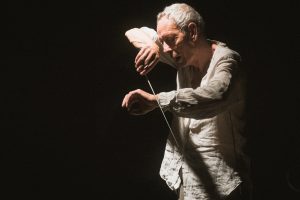 Solitude is an exclusive state of the actor, eternally waiting for inspiration and imagination to give meaning to his actions, through his search outside the worldly dimension, towards universal places and times. Soaring and unworldly thoughts, the genealogy of human acts is like the flowering of the earth.
Solitude is an exclusive state of the actor, eternally waiting for inspiration and imagination to give meaning to his actions, through his search outside the worldly dimension, towards universal places and times. Soaring and unworldly thoughts, the genealogy of human acts is like the flowering of the earth.
Here, the actor’s body goes through time, and is marked and transformed by the souls that have dwelled there, the greetings of voices and other unknown beings by which it is shaped and inhabited. Puppet-actor is a double solitude for the essential welcome of otherwise unrepresentable conditions: inertia and leap, stillness and dance, breaths and puffs, the elusiveness of the being itself. Inhabiting the edge of the unutterable, the poetic word is open and welcomes the echoes of the many silent or mute living beings. Everything is allowed to this ghost.
The actor is like a ghost travelling though time, absorbing and speaking for the souls of our obscure, underground, and outdated times. In our worldly times, humanism is forgotten for humanism, the values of human beings are exalted to the detriment of nature’s values, of the infinite voices inhabiting the earth and, with a wider look, the stars and the universe.
The actor is represented as an inanimated body waiting to be inhabited by the breath of theatre, by inspiration and voice. The actor is a still creature until he is awakened by the creative breath of poetry, music, and gesture. The puppet is not a wooden body, even though wood is referred to in this work, but as a natural element worn away by woodworms. This is just the first chapter of the Atlas, my work book about the experience of being an actor, since childhood, since he discovers the beauty of adventure and danger.
The figure of the puppet is the perfect semblance, lifeless and empty but ready to embrace any sudden and tragic impulse, condition and incursion. It is a body open to the voices of existence, be it the wind, a lone wolf at night, the cry of a baby, or the internal voices of matter itself. The puppet represents a body ready to be inhabited and played. It is a poetic meditation on the origin of poetry, on the meaning of scenic action, on the reasons of the inanimate and silent body-actor waiting for a spark.
Lenz Fondazione
ORESTEA #1 Nidi
Orestea is a trilogy formed by the tragedies Agamemnon, Le Coefore, Le Eumenidi and followed by the satirical play Proteus, lost, with which Eschilo won in 458 BC the Great Dionysia. Of the trilogies of all classical Greek theater, it is the only one that has survived in its entirety.
In the first chapter taken from the Agamemnon – # 1 Nidi – new creation by Maria Federica Maestri and Francesco Pititto, the installation of the tragic work involves the construction of pedestal-nests in which the female characters of the tragedy – Clitennestra and Cassandra – lay and they hatch their own eggs. The destruction of the nest triggers the tragic conflict between the forces, an irreparable act that declares the double death.
Boris Kadin
ORESTEA. Dystopian.
Dystopian is a performance based on the idea of invincible DNA and eternal repetition: conditionals that cannot be resolved even by Aeschylus Gods, especially today when we are all connected and the technology (mobile) has become a part of our being, of who we are(not). Dystopian is also a soft cyborg. That’s why poetry repeated by Dystopian is a generic bot of magical realism that ejects text every single minute. Poetry is written by machine using limited fond of words. Dystopian is also a killer. In a postmodern way. He is now in a process of killing his father (not mother).The question is: is it more noble to kill a parent or passively observe the vanishing of the body & mind(spirit) in an institution that cares for the elderly. Dystopian is the performance that takes form of a semi-concert with narrative of generic poetry, using visual samples and actions on the stage related to intimate story of performing artist.
Jan Voxel Digital Art
MY BODY ATLAS_video
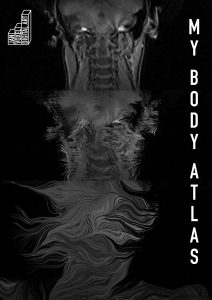
My body Atlas is an “objectual” look at the body: the body becomes the object of observation and an instrument of creation by the artist. In this sense, the work is placed fully within the reflection on the transformation of the body, typical of artistic practice starting from body art. Unlike the latter, the transformation that My body Atlas implements on the body does not concern the body-in-pre ¬ not – the performance – but is implemented on the body image, on its x-ray representation, bidi¬mensionale and digital. The x-rays that make up the work are intended as real self-portraits and portraits (in the case of the seven hand-sewn radiographs, belonging to seven different people). The video animation and the seven hand-sewn radiographs therefore represent as many self-portraits and portraits that hide unexpected maps of graphic signs, real geographies ready to be discovered and brought to light. The gaze on the body-object also involves the external observer, called not to stop at the first level of reading (radiography) but at a deeper level of interpretation (geography). The artist, in looking inward and looking at the other from himself, in the phase of creation, has made an imaginative effort which, to be understood, requires time and effort from the observer. The inside of the body is experienced by the artist as an independent object; the observation leads to an arbitrary decision of underlining, of emergence of signs inscribed in the anatomical parts. Not therefore a mere exposure of the body to the external gaze, not only penetration into what is most intimate and private in the body (the skeletal apparatus and the organs), but rather a staging of the beauty of perimeters and contours of the organic masses. My Body Atlas is an inspection of a landscape inaccessible to the eyes, a micro-camera that descends through the organic ducts and reveals a secret and swarming fragment, incessant beat or slow flow. My Body Atlas is human geography, captured in its furtive construction between one eternal stasis and another. Finally the work wants to reflect on the self-portrait and on the portrait as forms of representation of the self. Used to showing us in the best part of ourselves or even as we are not-we-want-to-be, My body Atlas shows the body in its vulnerability and its most intimate and hidden fragility. Being vulnerable, traversable, unarmed is understood as a quality and not a defect. If on the one hand the X-ray is a diagnostic investigation operation, an aggressive and invasive look through technical equipment, image of a body immortalized in the disease or in the trauma, I refer to hospital environment, on the other it is an opportunity for sincere confrontation with pain and the death. The slow and laborious practice of generative art, zen seam of sur mesure algorithms, tiring and usual journey on digital ridges, allows us to reveal this inner diary, this unexpected and emotional atlas.
Tim Spooner
Il Grande Teatro del Mondo | LE GAMBE HANNO TROPPE ARTICOLAZIONI_video
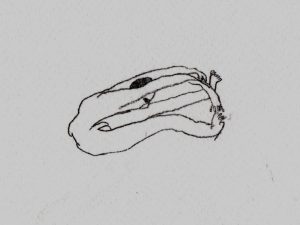
LE GAMBE HANNO TROPPE ARTICOLAZIONI is a variation on and extension of the performance MOMENTARY PLUSH, which was made for Natura dèi Teatri 2018 as artist in residence. The work extrapolates from Calderón de la Barca’s The Great Theatre of the World a notion of prototype bodies and prototype lives. This idea is explored within the landscape of a zoomed-in moment of time which is soft to the touch, with qualities of furriness and blurriness.







